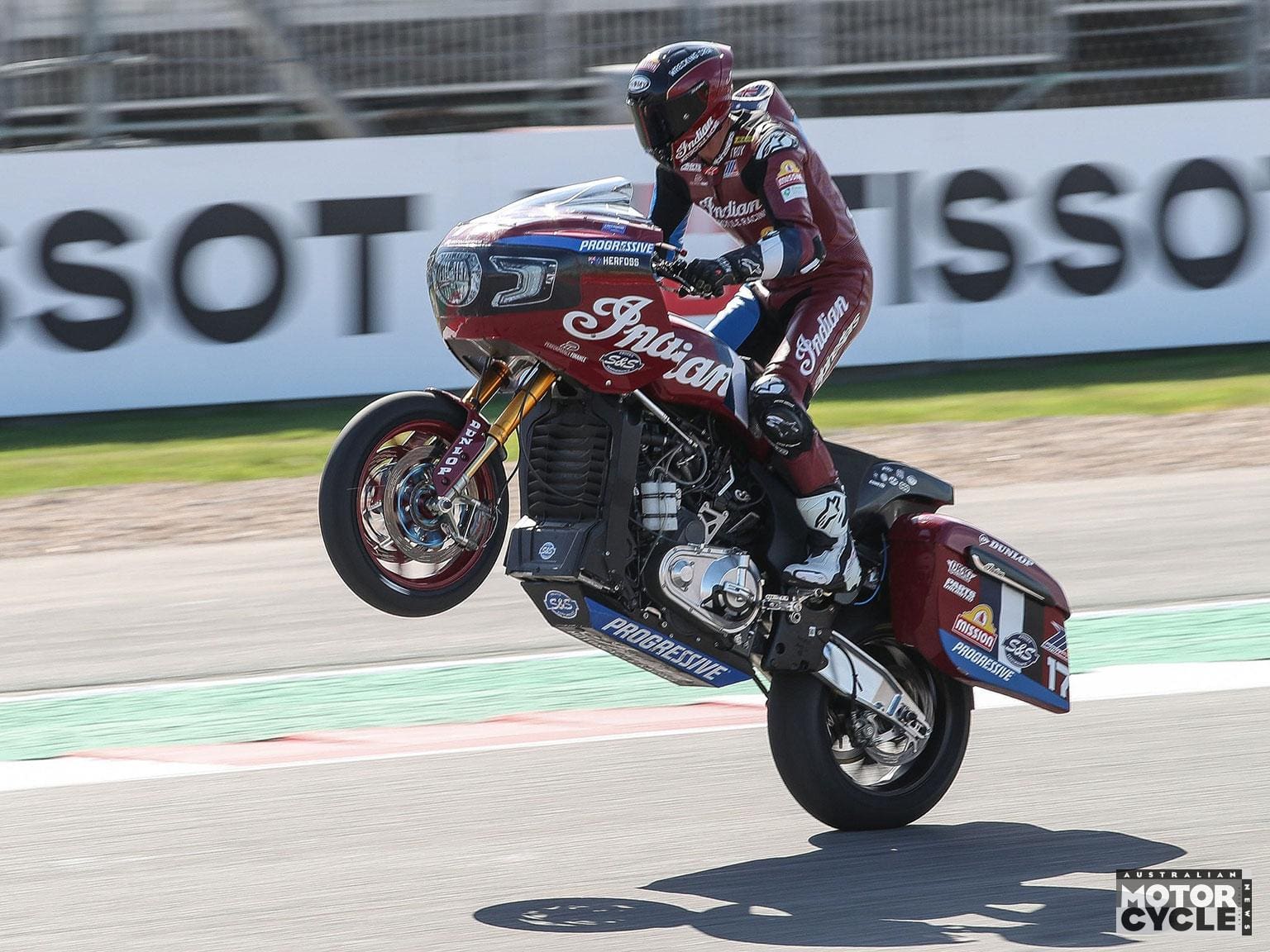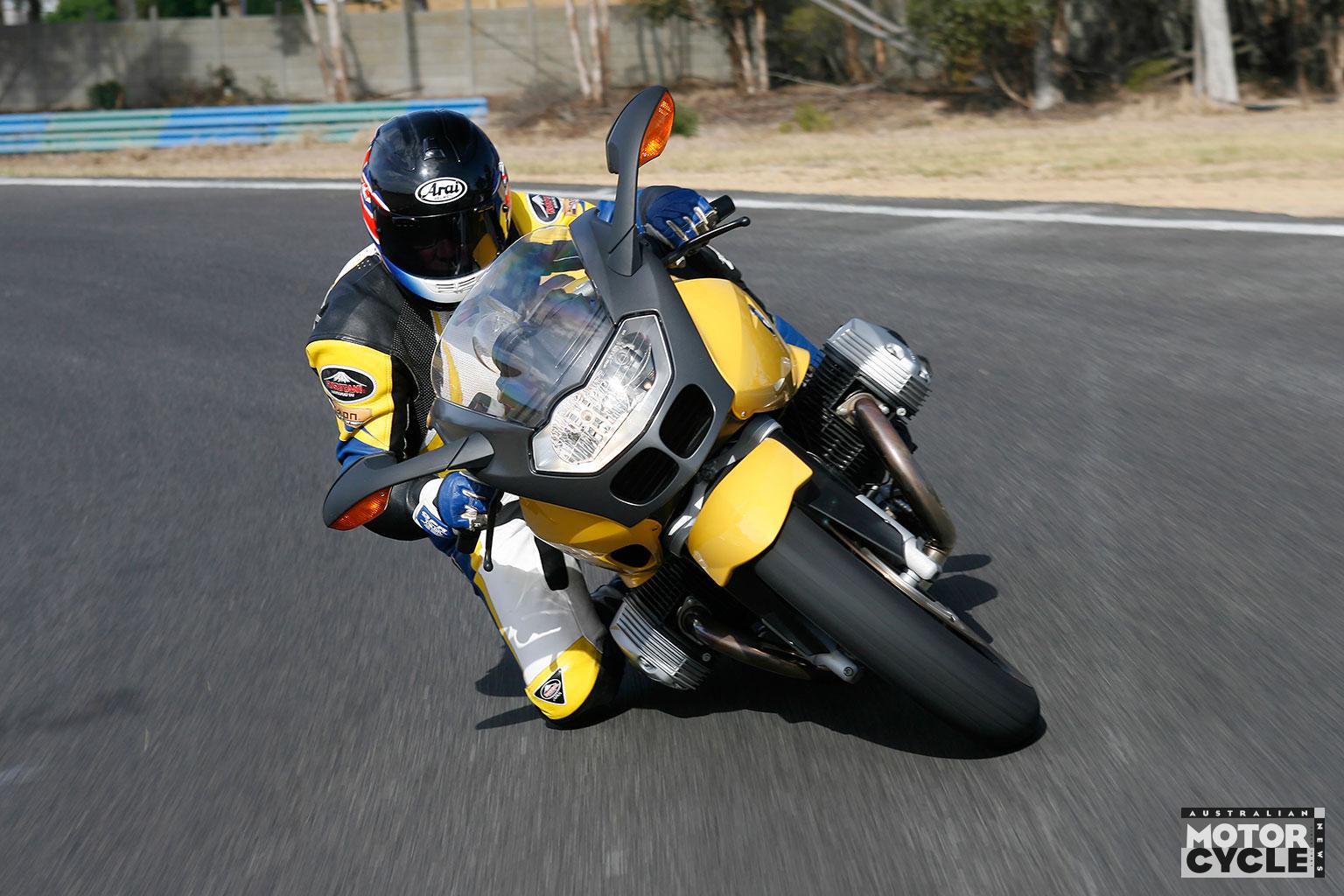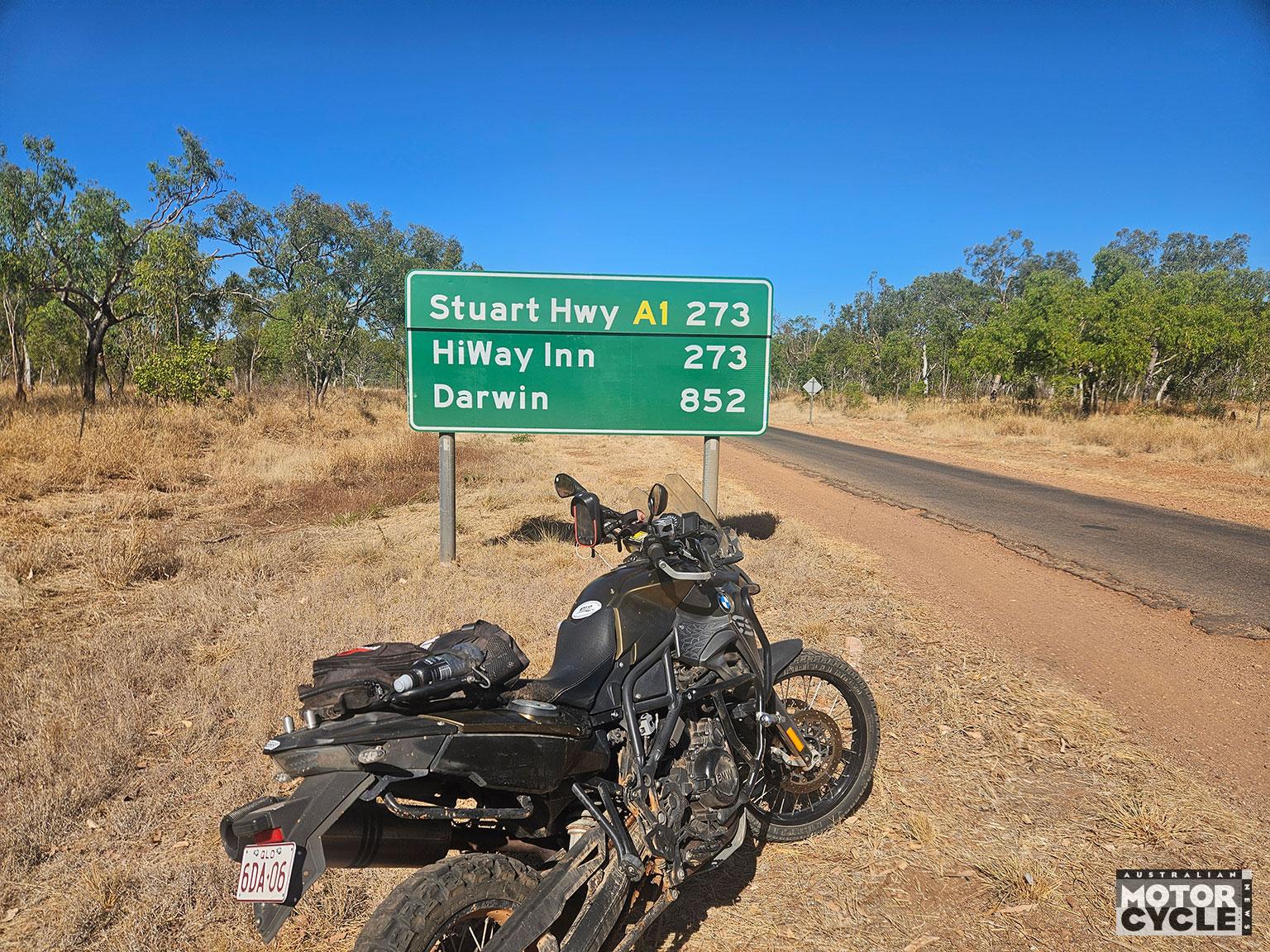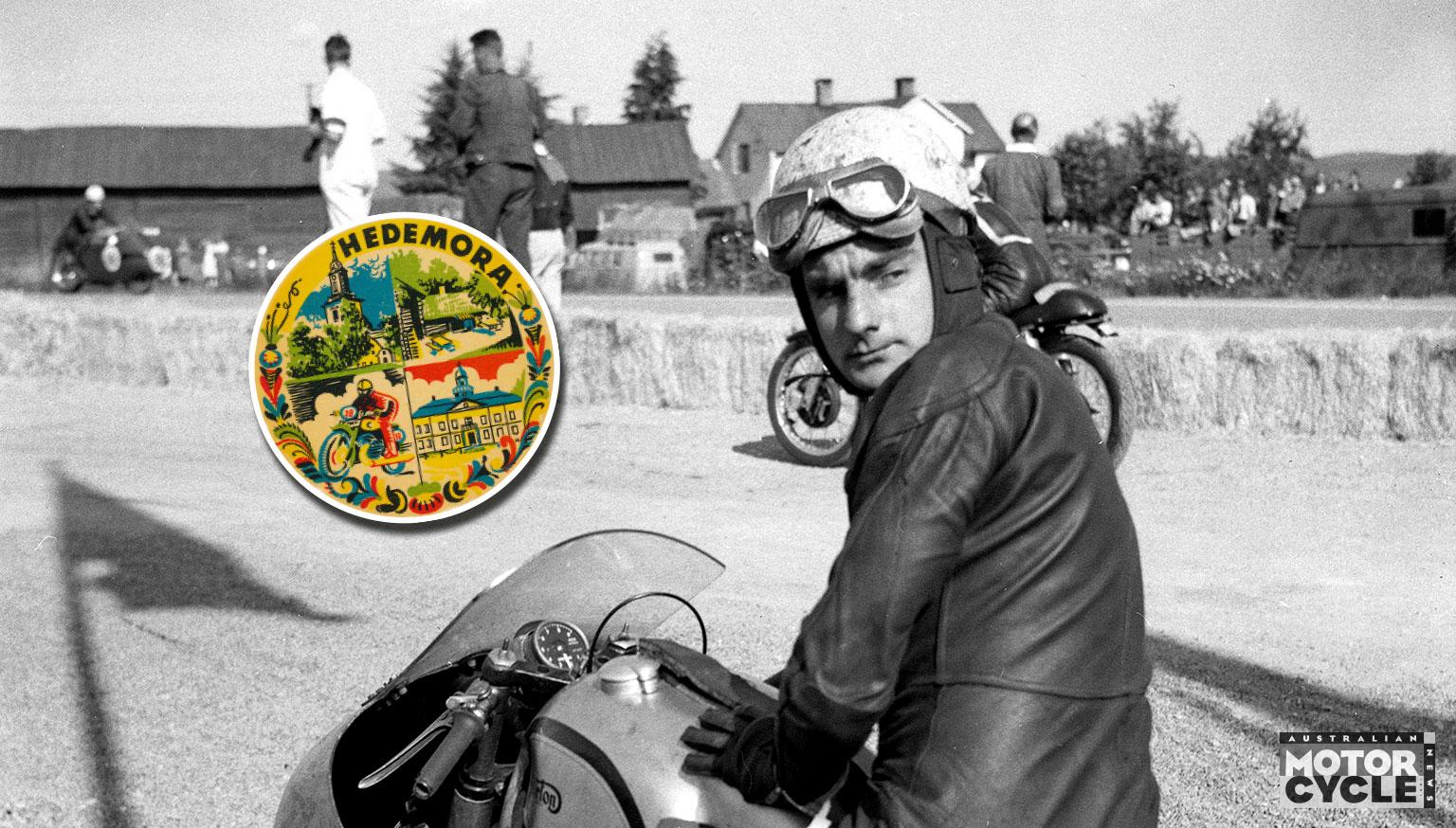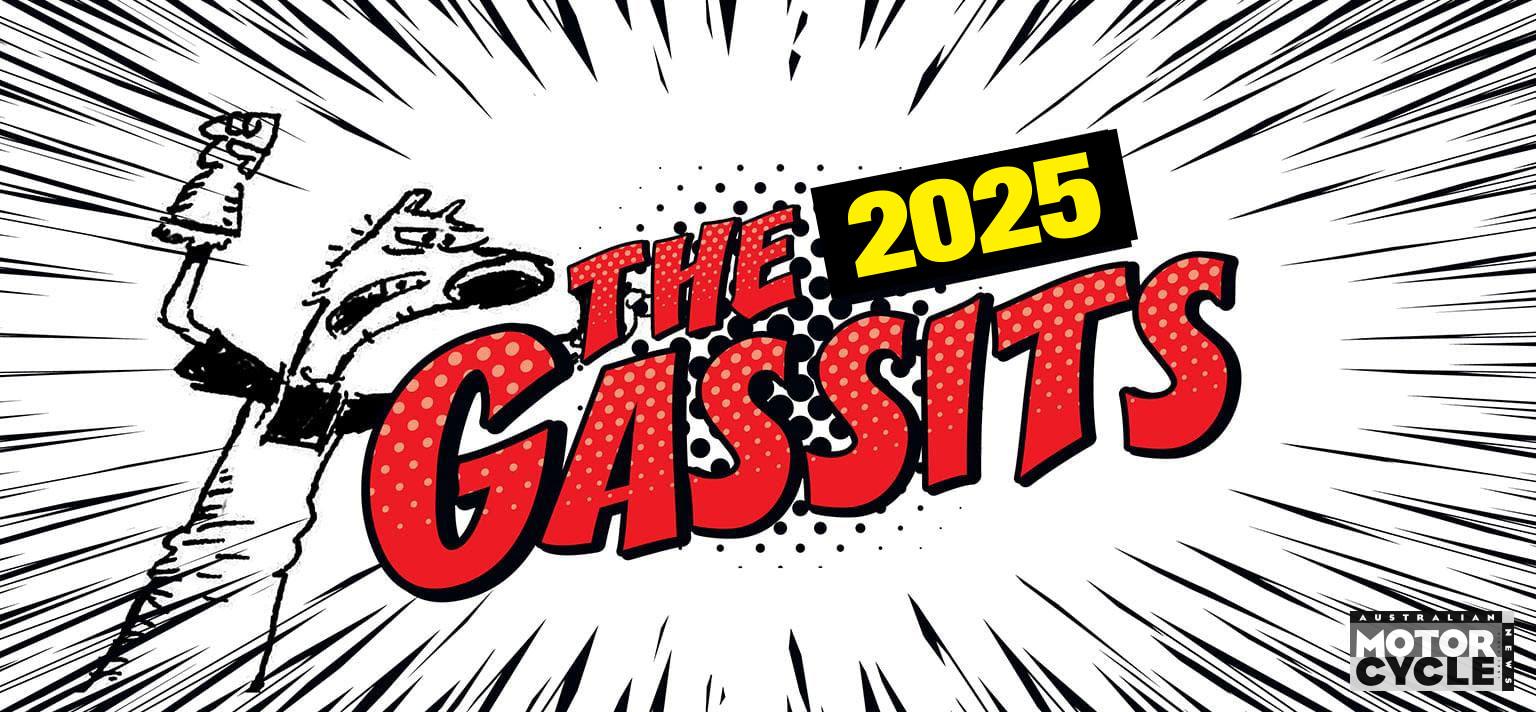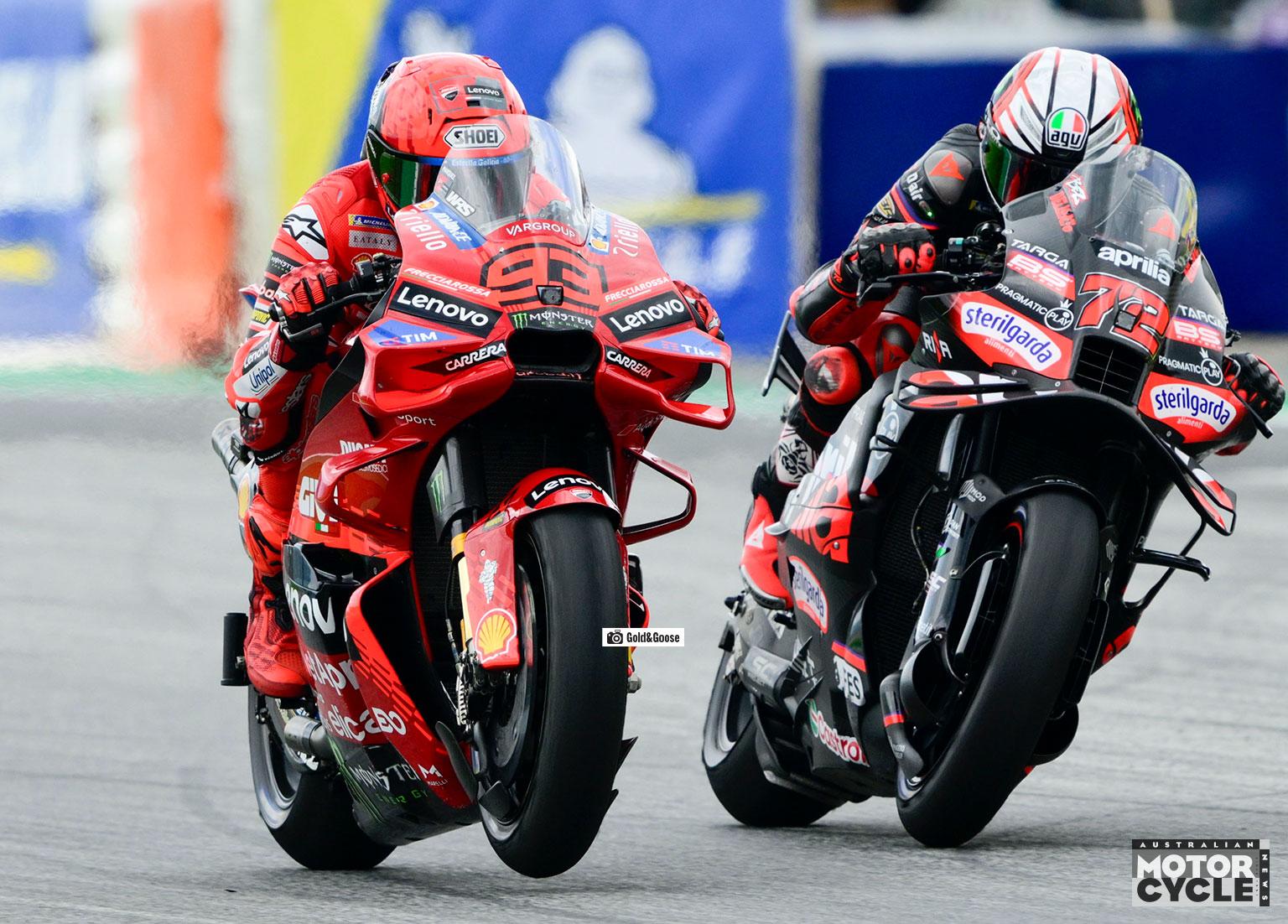In his first major interview since taking out MotoAmerica’s King of the Baggers title, Troy Herfoss tells AMCN how he stepped out of his comfort zone to win.
At the end of 2023, Troy Herfoss was certifiably the best motorcycle racer in Australia. Having battled back from the lows of a devastating injury to climb the mountain again in an epic battle with Mike Jones, he then flipped the script and announced he would be racing in MotoAmerica’s King of the Baggers series for the Indian factory-backed S&S Cycle team in 2024.
The response in the paddock was mostly positive and, with Herfoss’s experience and reputation as a tough competitor, expectations were high. Yet, there were questions. Why Baggers? Wasn’t it a novelty class? Why not Superbikes? He doesn’t know any of the tracks. The competition is incredibly tough.
By the end of the year Herfoss had answered all these questions and more to clinch the title at the final round in New Jersey, climbing the podium 15 times out of a possible 18. He’d conquered the banking of Daytona, COTA’s MotoGP circuit and, finally, the home track of his main rival, Harley-Davidson’s Kyle Wyman.
We sat down with the 2024 King of the Baggers to get his take on how the year unfolded.
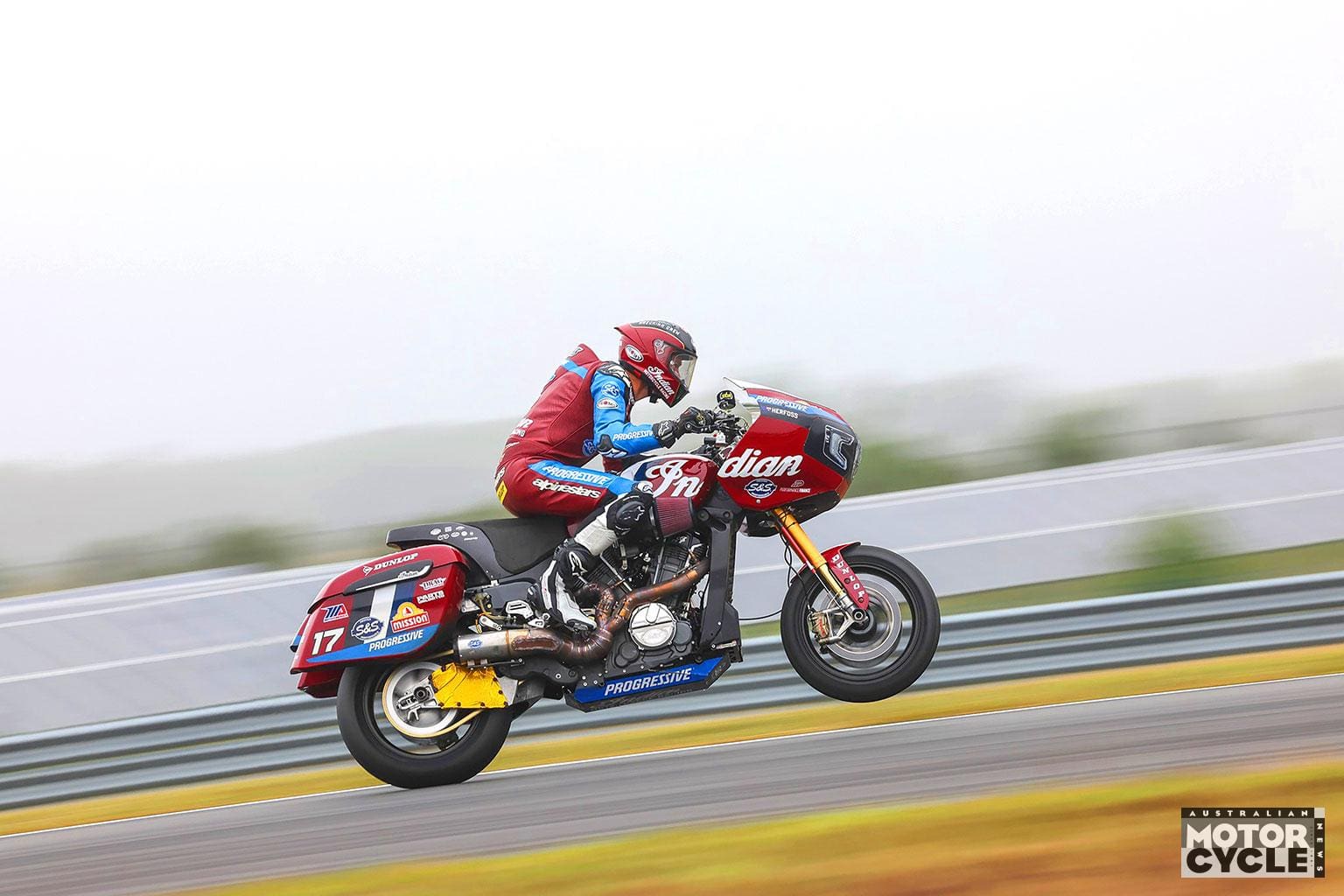
Getting up to speed
First he puts the season into perspective: “I’m over there as a rookie in MotoAmerica at 37 years old – not as a young talent. I’m there because I’ve probably worked hard over the years and I’ve kept showing up – and that’s what I bring to the team.”
The season opener was held at the legendary Daytona, with its banking being one of the most daunting sights in racing, something Herfoss described at the time as ‘the scariest thing I’ve done on a motorbike’.
“To paint the picture – you have no testing – just a 20-minute session and you’re straight into qualifying.” Herfoss mounted the podium twice behind Wyman, but the field was on notice – with the American media stunned at how quickly he learned the track. COTA was another new track, and in front of the MotoGP paddock Herfoss took his first win on the Indian Challenger, backed up with a second.
“Something I’ve always prided myself on is adapting quickly. I was really satisfied with how quickly I was able to learn the tracks; that definitely helped me a lot during a race weekend. Getting up to speed in that first session is very important if you want to race at the front.”

A double victory at Atlanta, including a huge win on a drying track along with lap records, meant the paddock was taking Herfoss very seriously. Another victory at Road America meant things were looking good – but there were problems. Crew chief Charlie Hallam had been denied entry to the country with visa issues prior to COTA, and the cracks were beginning to show.
Brainerd resulted in a podium and seventh. Laguna Seca was worse – 11th and fourth. The program of racing for the year was ambitious and also included ASBK in Australia, so the flights were non-stop. Could the title be slipping from his grasp?
“The off season was hectic. I changed teams in ASBK to ride with Ben and Desmosport Ducati and we competed in the Summer Night Series at Eastern Creek – then things didn’t stop until Road Atlanta, really. Then we started a busy part of the season in America where we had five rounds in nine weekends – and I was without a crew chief. I also did double duty on the Superbike – that was tough, working between two teams. By the time I’d arrived at Laguna Seca, it had been a long stint – I’d also hurt my back a little bit and was a bit ill.”
A trip back to Australia seemed to do the trick. “By the time I’d arrived back home and had a week’s rest, I felt like I could have ridden a second a lap faster. The batteries were a bit flat. Knowing what I know now and what I’ve learned, that type of schedule is definitely possible. I got myself back on track as the year went on, and at the Bend for the final ASBK round, I still felt really motivated.”
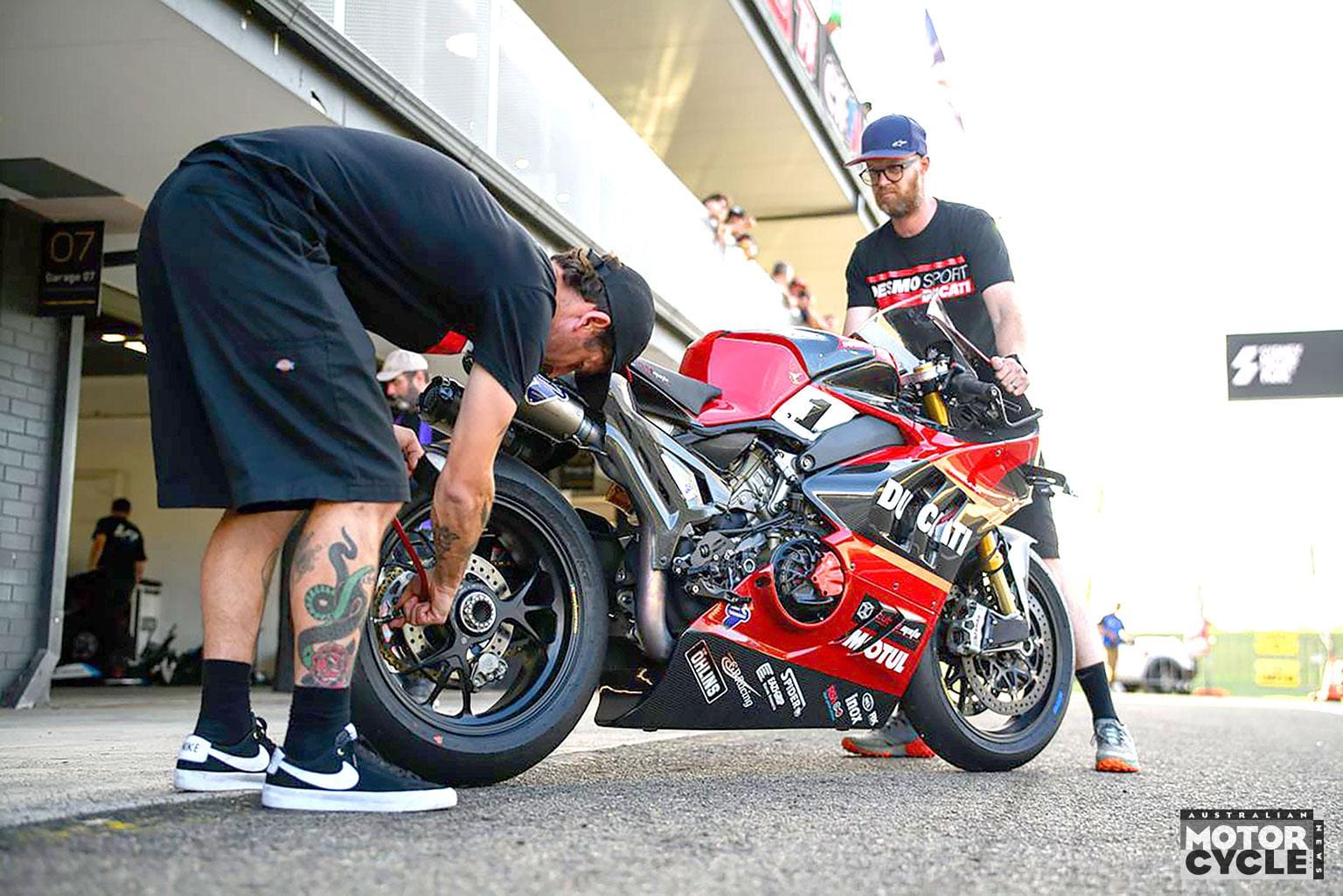
Don’t overthink the process
The MotoAmerica series hadn’t raced at Mid Ohio for a long time, so a test on the Thursday before meant for the first time in the year Herfoss started Friday practice actually knowing the track.
Hallam had also returned at Mid Ohio, which coincided with a return to the top step. “We had our first test outside of a race weekend one week prior to Mid Ohio – it was the first chance I’d had to test since before Daytona. On top of that, Charlie was back! It felt like a return to normality.”
The hype surrounding his switch, and the ups and downs of the year, all culminated in a final-round showdown which was essentially a winner-takes-all contest between Herfoss and Wyman.

“It’s funny, Charlie and I, jeez we drove a lot of miles together this year – we have all these little sayings and catchwords we would use! Stick to the plan, keep showing up, don’t overthink it. Even at my age, it’s pretty basic. The things we talk about in between sessions, you’d be amazed how basic it is. As a rider, you just need to be reminded that it isn’t that complicated, you’re just riding a motorbike, that’s all it is. It’s easy to make it more than it is. When you’re in any kind of sport – we’re all human – when there’s nerves and pressure involved, everyone reacts differently. If you overcomplicate things and think too hard about stuff, it’s hard to go through all the processes properly.”
The New Jersey finale was a classic Herfoss scenario: high pressure, high stakes. “It was the best way to finish it off, I was so motivated. I loved everything about it; it rained all weekend, it’s Kyle’s home track. My first proper dry laps for the weekend were rolling out to the startline for the race. Mat Mladin was there as the Grand Marshal; he was someone I’d idolised as a kid. It was his first time back in the US since he retired and he’s there sitting on my bike! Mat’s a man of few words but he wished me luck and was super supportive.”
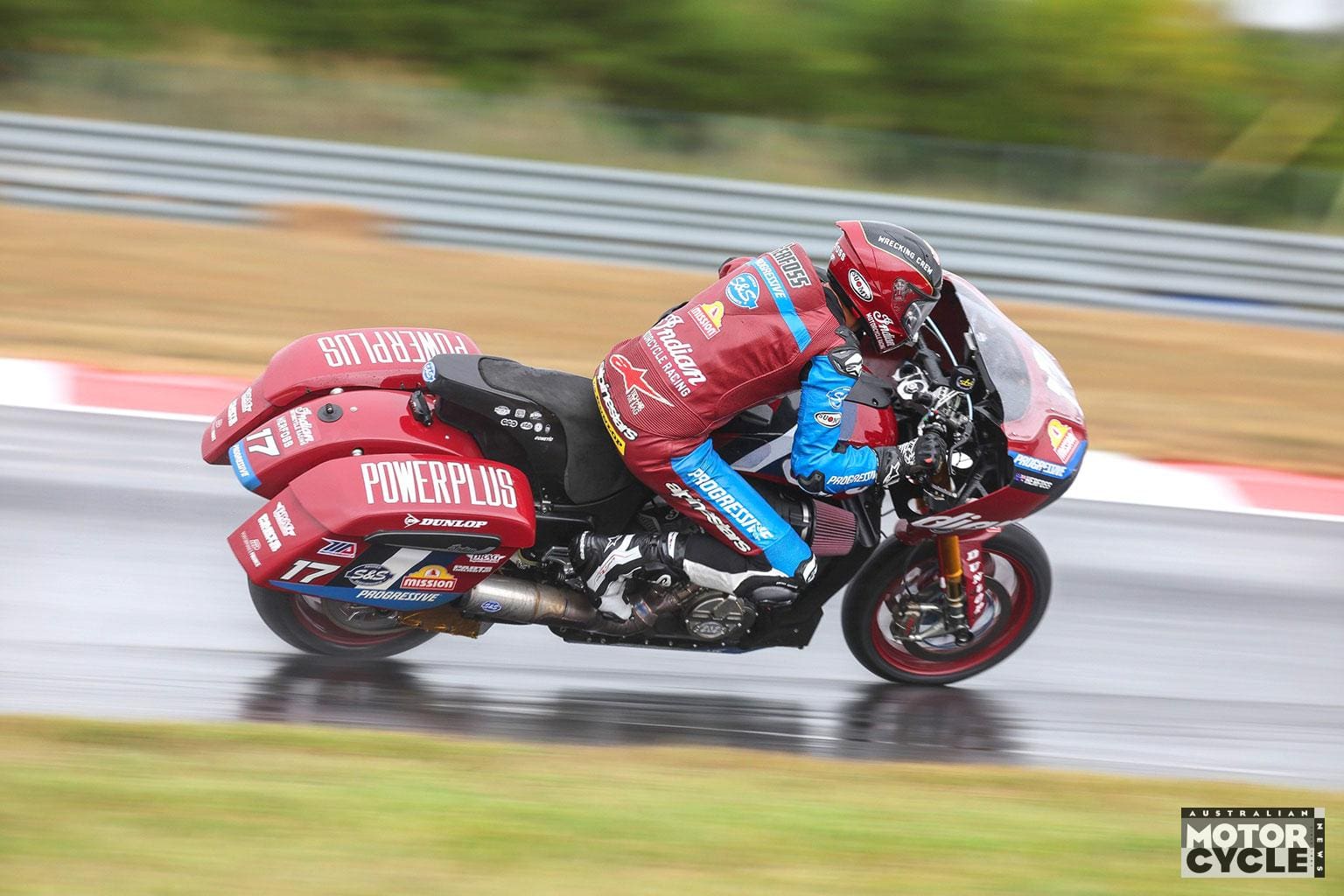
Classic Herfoss high-stakes deal
Herfoss and Wyman had both qualified on the second row, but it was Herfoss who made the decisive move in the opening race, surging forward to finish second behind Rocco Landers. In the second race, Wyman had the jump but Herfoss immediately took the lead, “It just felt like it was meant to happen. It’s always so cool to win a championship, but I just love the idea of winning where the result is beyond doubt – there is no question. It always seems to go down to the wire for me, but I loved that we could finish it off by dominating the weekend. It’s always so fulfilling to do it that way.
“It’s a credit to the team – the bike is so good. It’s hard to explain to people sometimes that a bike that big can be so easy to ride. I could just put it wherever I wanted on the track. The reality is, you don’t win big unless you’re willing to lose. I was calculated throughout the year, but I put it out there, put myself in a position to win.
“I think in the early parts of the race, especially short races like in Baggers, you have to be super aggressive and assert yourself really quickly. When that happens, like at New Jersey, it takes a competitor a lap or two to work out what’s happening. With a short race, it’s almost all over by that point. It’s all about track position.”
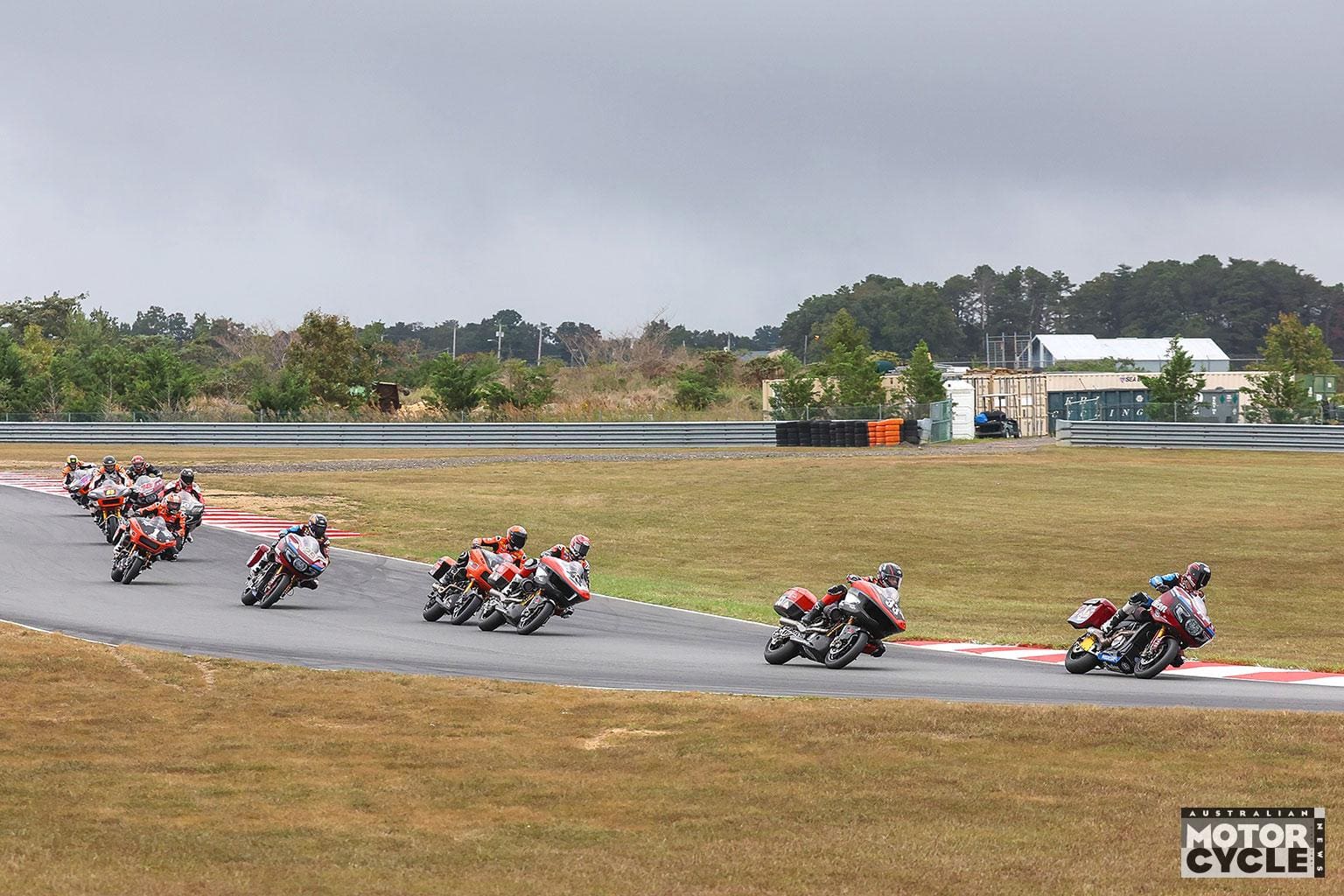
The rivalry wasn’t just between Indian and Harley-Davidson this year. Herfoss entered a team that was already successful. Jeremy McWilliams had brought star power to the series team initially, but the main protagonist was 2022 champion Tyler O’Hara. “You’ve got two guys the same age in one team and both think they are going to win. He’s got championships on the Bagger, he’s driving the development, he’s been there from the start and then I’ve turned up and picked up good results right away. After Daytona I’ve got a bit of a feeling I’m going to do some winning – and it took us a few rounds to figure out how to manoeuvre around that.”
Stories surfaced through the year that things were not all smooth between the teammates, and that O’Hara was feeling the full brunt of Herfoss’s competitive nature. “Definitely at the start, it was hard. We were both starting every session thinking we were going to be the top dog. The way it worked out, he was stronger on the Hooligan and I was stronger on the Bagger. By mid-year, it was established Tyler was going for the Hooligan title and I would be going for the Bagger championship.”
The relationship eventually softened into one of mutual respect, with both riders claiming titles. “We were all in for each other in both championships. Tyler could see that I was dedicated to helping him on the Hooligan and he literally rode his best races of the year on the Bagger helping me. Definitely, at the start of the year, it was a very tricky situation!”
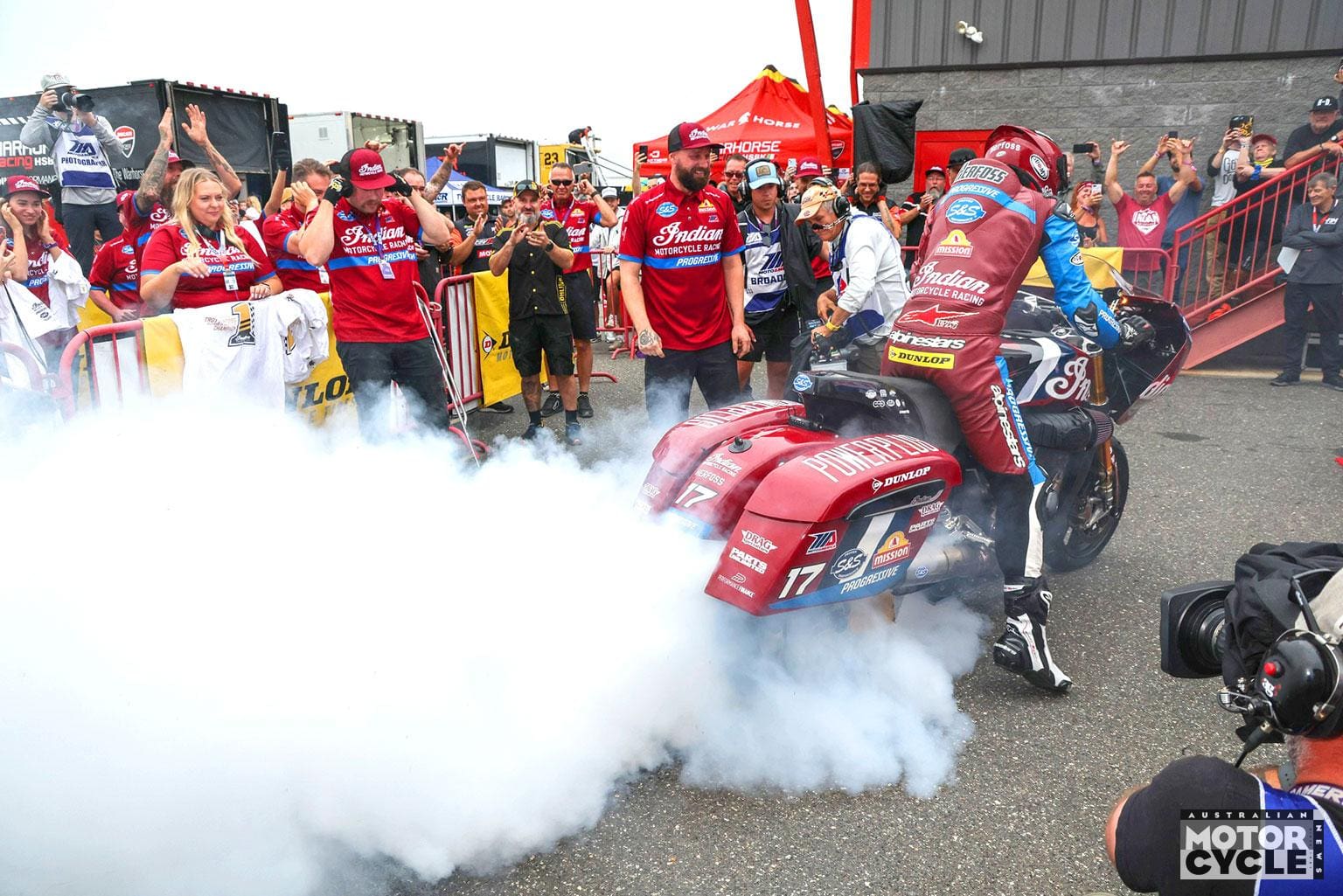
Troy’s crew
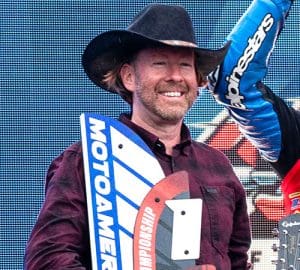
Gary Gray – Indian’s VP of Racing, Technology and Service
“He’s got a bit of Chuck Norris about him,” says Herfoss. “He’s really high energy, he asks the hard questions. He expects a lot from the team and he is always there – he shows up at every race weekend and he is all in. The atmosphere in the team is amazing and he’s at the top of the tree – definitely a leader. He makes sure everyone knows their role and sticks to the plan, basically. He was the first person I had contact with at Indian and the way he pitched the ride to me, I felt there was no way I could say no to racing King of the Baggers. When I arrived, I was delighted I’d made that decision. Everything he said he would do was done. He’s created a great opportunity for me and I’m super thankful.”
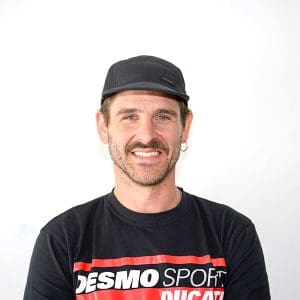
Charlie Hallam – The technician who became a soulmate to a champion
The season produced unbelievable highs but also some very challenging times, none worse than when Charlie Hallam was kicked out of the US for visa issues right before the COTA MotoGP round. “My first feeling was that I’d let Troy down,” he said. “My job is to let him feel capable and confident, to be a motorcycle rider. We’d only had one race and we were heading into back-to-back race weekends. It was the most stressful time of my life; I thought my whole world was caving in. When I was stuck there at San Francisco airport waiting to be sent home, I didn’t know what was going to happen, I didn’t know if I would have a job or if I would be unemployable afterwards. It was a bad time.”
Hallam believes the way Troy and the team reacted to the situation helped shape the success for the rest of the year. “The team were workhorses. They all took up the slack and dealt with the problem, every single one of them. I had proxy crew chiefs standing in for me on the phone all weekend – no one complained. It certainly felt good to get back on track and complete the year so strongly. The end result was incredible, really. It’s a testament to everyone involved and their personalities.
“Harley have a bigger engine capacity than us, but the overarching design is very different. The Indian is water cooled, which essentially means we can produce more horsepower out of a smaller engine. Having the radiator on the Challenger does pose some problems, one being that all the mountings are homologated to the production model and that impacts ground clearance. Rev limits are different between the two bikes to achieve parity with power, but being water cooled essentially means Indian have a higher state of tune compared to the Harley. We would be horsepower over torque where I assume Harley would be the opposite in the seesaw of performance.
“When we were on the grid at New Jersey, I’ve never seen Troy so nervous. I’m not exaggerating – but he trusted the process, stuck to the plan and let instinct take over. I knew what we had to do going into the race as a team to prepare, so I felt completely calm. When I saw the opening lap at New Jersey I knew any nerves for Troy were pushed to the back of his mind – and I guess the rest is history.
“Troy and I are the same age, we grew up in a similar way, and I think our personalities complement each other. On a race weekend I’m quite calm – outside of work I’m probably more highly strung than Troy! I would say I’m an overthinker, I dig deep into things and my mind never stops. On a race weekend, that kind of mindset is a positive thing, I think. For Troy – or any rider – he needs to not do that, so I take that on, work through information and let him just focus on being a rider. It gives him a head start on what to expect over the weekend.”

Winning ASBK vs KOTB
“They’re both special in their own way,” says Herfoss. “I think what I get a kick out of in racing is trying to separate myself from others. This year that meant going to a new championship on a new bike in a new environment. Winning King of the Baggers is very different to winning ASBK – doing something that people don’t expect you to do makes it really special to me. Winning a title is always hard, it doesn’t matter what championship it is. Your main rivals are always top competitors and true professionals.
“The main reason for changing this year is that I love racing and I want to keep racing – but it needs to be sustainable for me. I had an itch to ride something else and, luckily, this season has ticked multiple boxes. I’m able to race at a professional level and make a wage from it. I’ve jumped out of my comfort zone, I’ve gone to a new championship and I’ve been able to make some money doing it. I’m still a professional motorcycle racer and in this day and age I feel fortunate to say that.”

Harley vs Indian
Herfoss: “It’s real, so real. The guys who are supporting Indian and HD – they are all-in for their brand. The HD guys, there’s no exceptions, they can’t be friends with me! I made it my mission to smile a lot, to make it harder for them to hate me!
“The Indian is such a high level of motorbike, as high as any Superbike I’ve ever ridden. Working with that level of engineering, it’s very exciting. We’ve put on a great show, we’re fast, it’s everything you need with a class like that. It takes a new spectator a weekend to wrap their head around the noise, size and speed. It’s a big commitment to ride a bike like that in the wet – at Road America it was fully wet and dicey. I had good results, I won’t complain, but I definitely knew I was alive with 285kg at that speed in the wet!”
Hallam: “The rivalry is a funny thing. It’s like an arms race. You’ve got these two big companies with pride on the line with two motorcycles that aren’t meant to be raced in this way, so you can’t afford not to have your foot on the pedal. You’re asking yourself this question every day: What are they doing? What are they doing?”

The future
“I’m really enjoying the Bagger,” says Herfoss. “I still love the Superbike and I think if I can scratch that itch in Australia, that will do me. I love the idea of racing a Superbike in MotoAmerica, but this (Baggers) has been such a great gig for me. The team is so reliable and rock solid, plus it’s been so much fun working directly with a manufacturer. I’m looking to lock this in for a couple of years at least, to be honest.
“We’re still trying to finalise the contract for next year and if I will ride the Hooligan. I really want to ride a Superbike in Australia next year.
“There’s a few reasons why I believe I won this year. One, I had a great team around me. Two, I had Charlie with me and he is someone I trust a lot, and thirdly, for me as a rider, I was so sharp. At the start of this year I had come off a really good Superbike season; I went straight into the Sydney Night Series with Benny and his team, then I raced at Phillip Island. By the time I raced at Daytona I was so sharp and I think it gave me an advantage over my competitors.”
Herfoss and Hallam head back to the US in December to catch up with the team at S&S Cycle before a two-day test at Arizona. That will be it for the year, then a trip back in January for a dealer meeting and then a test before Daytona. “The Moto America season is very efficient, running March through September with a lot of racing and then a decent off-season. With ASBK, the best off-season you get is in the middle of the year.”
